THE REGION
Puglia has long been a popular destination for summer travel for Italians because of the beauty of its beaches. In recent years adventurous tourists from all over the world, seeking to escape the crowds of the larger Italian toursit filled cities, have discovered the beauty of this delightful region and especially of the Salento, the most southern part of the region, known as the “land of two seas”. Puglia is situated between the Adriatic and Ionian Seas and is often referred to as the heel of the Italian boot. It is a land of great natural beauty dominated by vineyards and olive trees which make it one of the largest producers of both wine and olive oil in Italy and Europe. Inhabited since prehistoric times it has been marked by the passage of many civilizations: It was an outpost of ancient Greece, conquered by the Romans, invaded by the Saracens, raided by the Turks. A succession of occupations by the Normans, the Spanish, the French, and the Austrians have made this region a very special chapter in the history of the country and because of it, its people are resilient, proud and incredibly hospitable. Its ports were also embarkation points for the Crusades and major commerce routes with the east and to this day they preserve a wonderful and rich history visible in each street, castle and church still standing. This small but charming region has played an outsized role in history and offers throughout a rich feast of charming towns, archeological sites, museums, medieval castles, fortresses, and Baroque architecture that provide endless enchanting discoveries even for the seasoned tourist.
|
in less than 20 minutes...
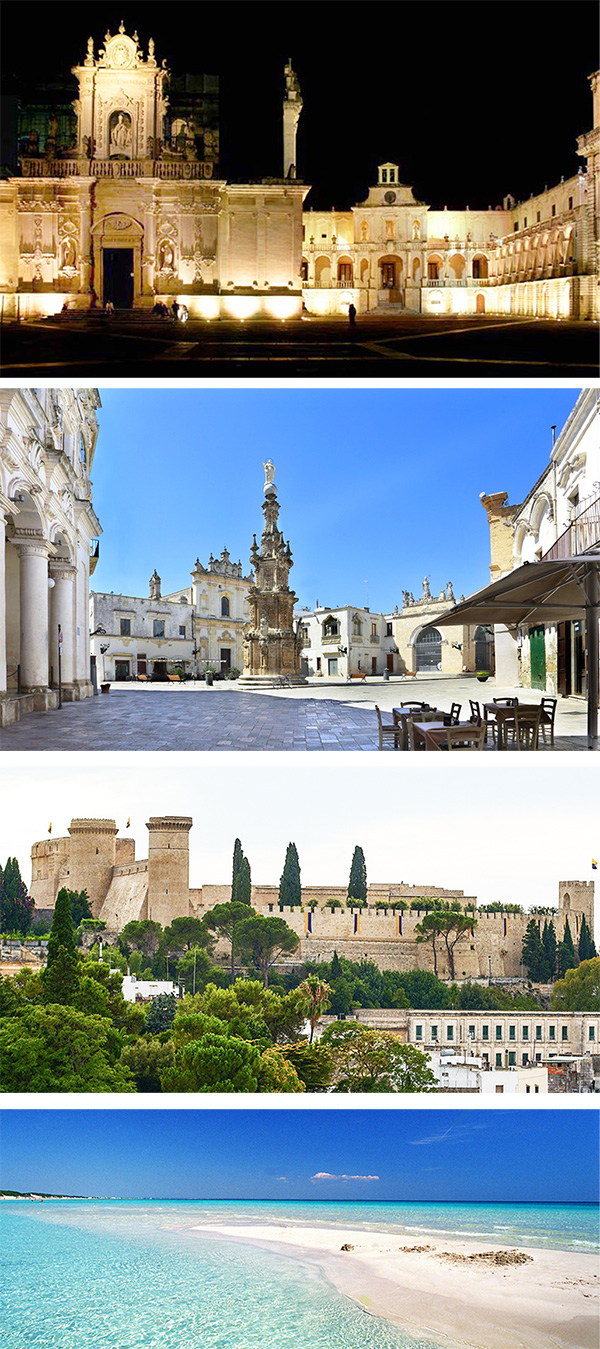
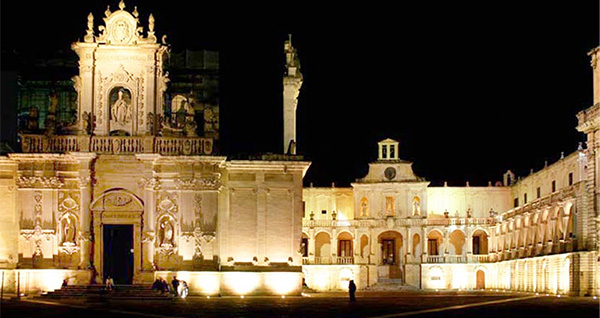
LECCE
Lecce is undoubtedly the jewel city of Puglia, often known as the ‘Florence of the South” because of its architectural beauty. It is a city of a unique, flamboyant style of Baroque architecture which can be seen in its many churches, cathedrals, and monasteries as well as it noble palazzi. But its history dates back to Roman times and the remnants of this glorious past are in plain sight among its streets. Walking its pedestrian friendly streets a visitor is charmed by its many plazas, cafes, restaurants, and shops that make it the center of “movida” in this part of the world. The city is filled with wonderful restaurants and shops and is suffused, day and night,with the golden glow of its unique stone...a soft limestone that has been used for centuries to shape the intricate decorations of its baroque portals, balconies as wellas windows, friezes and statuary. While Lecce has its own fascination, it is also the gateway to the Salentine Peninsula which was heavily influenced by the presence of Greek immigrants. This influence is still visible in the many villages where the local dialect, ‘griko’, still remains evidence of the strong Greek presence on the peninsula.
in 30 minutes or so ..
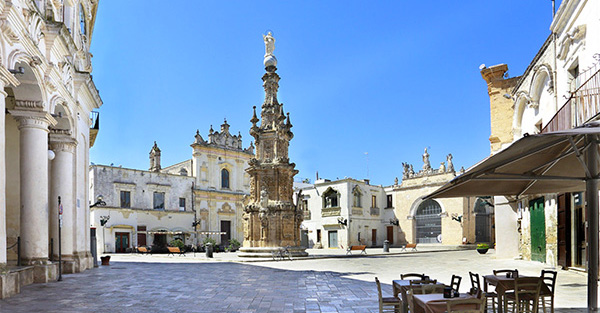
NARDO’ & GALATINA
While not often frequented by tourists, Nardo’ is one the most attractive towns in Puglia. Near the Ionian coast it has an interesting series of watchtowers and fine Baroque palaces. But the highlight is the charming Piazza Antonio Salandra from which you can share the Salentine dolce vita sipping a spritz with the locals. Nearby Galatina, known for its wine and tobacco production, has several fine Baroque churches as well as three towers which remain from its old walls. The large plaza in front of the cathedral and the grand elaborate palazzi all around give a sense of this town former glory and its architectural affinities with nearby Lecce.
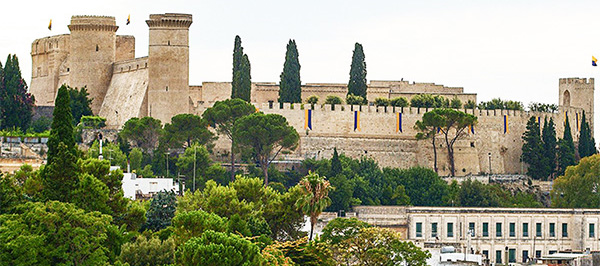
ORIA & FRANCAVILLA
Oria was noted in medieval times for its thriving Jewish population and you can still visit its Jewish quarter. It is a popular but more local tourist destination with great views of the Adriatic and Gulf of Taranto from its hilltop position. The wonderful Castello Svevo dominates the town and a visit reveals the glories of days gone by. In the month of August Oria hosts a famous palio and the streets come alive with a festive re-creation of life in the middle ages. A short drive away is Francavilla known as the ‘city of emperors’ because of the many Baroque palazzi built by its noble families. It also boasts many churches, including its large duomo and the Chiesa Matrice with its elegant symmetry and lovely fountain. The history of both these towns reflect the turbulent history of the region with successive invasions and occupations.

PORTO CESAREO
The area around the beaches of Porto Cesareo is a great example of "Maquis Shrubland" typical of some Mediterranean coastal areas. The sea of Porto Cesareo is of fundamental tourist attraction thanks to the presence of a white, sandy and shallow bottom with transparent waters that recall the Caribbeans, as well as due to its large and long beaches. The coast is characterized by numerous capes, islets and reefs, among which is of particular importance the "Island of rabbits". Packed with tourists during the summer months, this town and its beaches are better enjoyed during off seasons if you are not a fan of big crowds! Best beaches are considered Torre Lapillo and Torre Chianca with their Saracen watch towers, the beach of Punta Prosciutto, Lovely “stabilimenti” allow you to enjoy a very typical way of beaching Italian style with rental sun loungers and umbrellas and lots of local color and food! The best Stabilimenti are Bacino Grande, Bassamarea and Le Dune.
in 45 minutes or so...

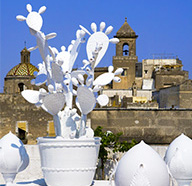
GROTTAGLIE & CEGLIE MESSAPICA
Grottaglie is the most famous center in Puglia for its ceramics. This industry was intiated by the Spanish rule in the 17th century and continues today to produce its own distinct craftsmanship. The town’s ceramic district is full of shops selling ceramics with vases and pots drying in the sun. The town also features a beautiful castle, monastery, churches as well as an art school that assures the preservation of the ceramic tradition in the future. Ceglie Messapica existed since ancient times when the Messapians of Greece and Illyria established independent city-states in the 6th Century B.C. Now the old town dates from the medieval period but Messapian burial sites have been discovered surrounding the town. The architectural style of the town appears almost moorish unlike some of its neighboring towns. It is today famous for its gastronomy and restaurants. In September the festival of Giovedi’ Settembre makes the streets come to life with street food, drinking and dancing.
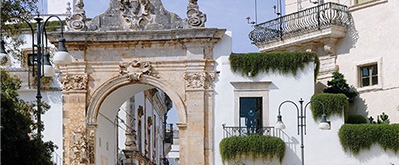
MARTINA FRANCA & CISTERNINO
Each of these towns is very different but both are great places to take a stroll and immerse yourself in the charms of the region. Second only to Lecce, Martina Franca is a showplace for beautiful Baroque architecture, atmospheric alleyways, and stunning palazzo. The Palazzo Ducale flanked by palm trees with its beautiful fountain is one of the loveliest in town. The town hall with its murals and the Church of San Martino with its nativity scene are well worth visiting. The main square just outside the centro storico is one of the most beautiful in the region and there are plenty of great shops both in the center and in the modern city which makes this town very lively in all seasons. The surrounding countryside is dotted with trulli. To complement a visit to this urban gem visit Cisternino, a lovely town surrounded by olive trees. This is one of the regions ‘white towns’ with its maze of whitewashed homes bedecked with geraniums. The town is fully pedestrian and filled with simple family run trattorie and cafes. The belvedere has one of the best views of the Valle’d’Itria with its distinctive trulli and olive orchards.

ALBEROBELLO & LOCOROTONDO
Alberobello is one of the most beautiful small towns in Italy and also among the most visited and touristy. Known for its unique white washed homes with conical roofs called ‘trulli’, of which there are over 1,000 here in a dense urban setting, it was named a UNESCO World Heritage Site in 1996. In the surrounding Valle d’Itria on the road to Locorotondo, you can see a striking landscape of vineyards and trulli. The town itself has an impressive Baroque cathedral set amidst white washed houses and alleyways and offers a panoramic view of the valley below from public gardens at the top of the town. Locorotondo takes its name from its particular shape on a round cliff and is one of the most charming town of Val D’Itria with a well preserved historic center made of labyrinthic white washed alleys. Famous also for its white wine (Verdeca and Bianco d’Alessano grapes) made in still as well as a delicious Spumante version.
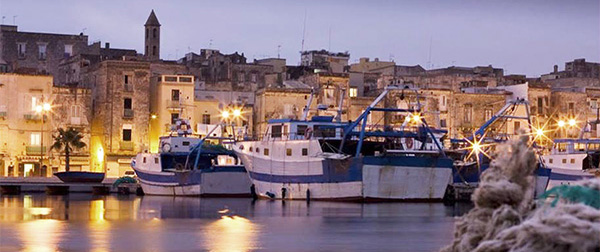
TARANTO
Is one of the most important centers of Magna Grecia and its harbor has guaranteed its importance for centuries. Today Taranto is an industrial center and the main naval base in southern Italy. Unlike most Puglian cities, its attraction is its ‘New Town’ an elegant and sophisticated area of 18th and 19th Century buildings, fountains, and promenades rather than its ‘Old Town’, although this part of town features a notable cathedral, fort, castle, open air fish market, and the most important archeological museum in Puglia.
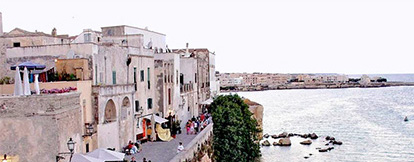
OTRANTO & MAGLIE
Otranto, the easternmost point of Italy, is one its most beautiful small towns in all of the country as well as one of the most fascinating and attractive cities of the Salento. A popular tourist destination, it is a relaxed and welcoming seaside city with a fascinating history and many beaches with placid clear waters. With a rich heritage of Greek, Roman, and Byzantine occupation, it became a major trading center between Adriatic ports in the middle ages. Its most important monuments are the massive Aragonese castle built to fight the Turks and the Venetians, the magnificent cathedral which has a marvelous mosaic floor depicting the Tree of Life, and the Church of San Pietro, known for its frescoes. Cafes and restaurants abound and offer Puglian hospitality in an historic setting. Nearby Maglie is worth a stop for its beautiful main square and charming streets filled with locals. The nearby Laghi Alimini is a natural reserve with 2 lakes and a number of rare and unique plants and fauna. the nearby beach of Baia dei Turchi is uncontaminated and a beautiful place to enjoy the crystal clear waters of the Adriatic sea.
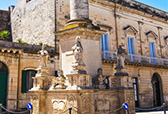
OSTUNI
Known as the ‘White City’ on account of its whitewashed houses,
Ostuni is one of the most attractive towns of Puglia. Perched on a hill
and dominated by its cathedral, its winding lanes are reminiscent of
an island in the Cyclades. The terraces of the old town offer wonderful
views of the surrounding countryside and the sea. Its restaurants, cafes,
and shops line its hilly streets and are always buzzing at day and night
but the wonderful side streets and alleys are as charming as it gets and
away from the crowds. The old cathedral was originally medievan
and was rebuilt after an earthquake in the 1400‘s in the Romanesque
style we see it today. Ostuni is a town to explore and enjoy not only
for its infinite charm but also for its food and great shops.
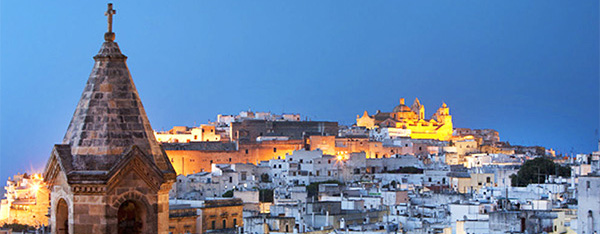
GALLIPOLI
is not a city on the the sea, but in the sea. Centuries old, it is still a
splendid fishing port and one of the most beautiful small towns in Italy,
Gallipoli, built on an island, is connected to the mainland by what is
believed to be the oldest bridge in Italy. The town combines city and
beach, modern commercial activity with a fishing village atmosphere
all set around a coastal castle fortress. The sandy beaches in and near
town are some of the best in Puglia and the seafood restaurants offer
the freshest harvest of the surrounding waters. In addition to the beauty
of the Old Town with its magnificent palazzi and shops, the New Town
is also a vibrant center of restaurants and cafes. Today Gallipoli is one
of the most international destinations on the Ionian coast and in the
summer it becomes a city of concerts and festivals and late night
dancing parties for a younger crowd!

SAN FOCA & TORRE DELL’ORSO
Just north of Otranto, San Foca is a lovely stretch of sandy beach and
wonderfully clear waters bordered by forests. It has become a popular
tourist destination with plenty of opportunities for watersports. The
nearby Torre dell’Orso is also known for its pristine long beach, sand dunes and clear water.

POLIGNANO E MONOPOLI
Polignano a Mare built on the site of an ancient Greek city sits on
cliffs above the Adriatic. It is known for its pebble white beach
bordered by a Roman bridge overlooking the sea, the San Vito Abbey
has a Romanesque church and a 16th century tower flanked by two
natural harbors, Monopoli was founded by the Messapians in the 6th
Century and fought over for centuries because of its position on the
Adriatic. Today the main attraction of this walled seafront town is its
ancient cathedral featuring works of art by leading Italian artists of
the 18th Century.
in more than 1 hour...
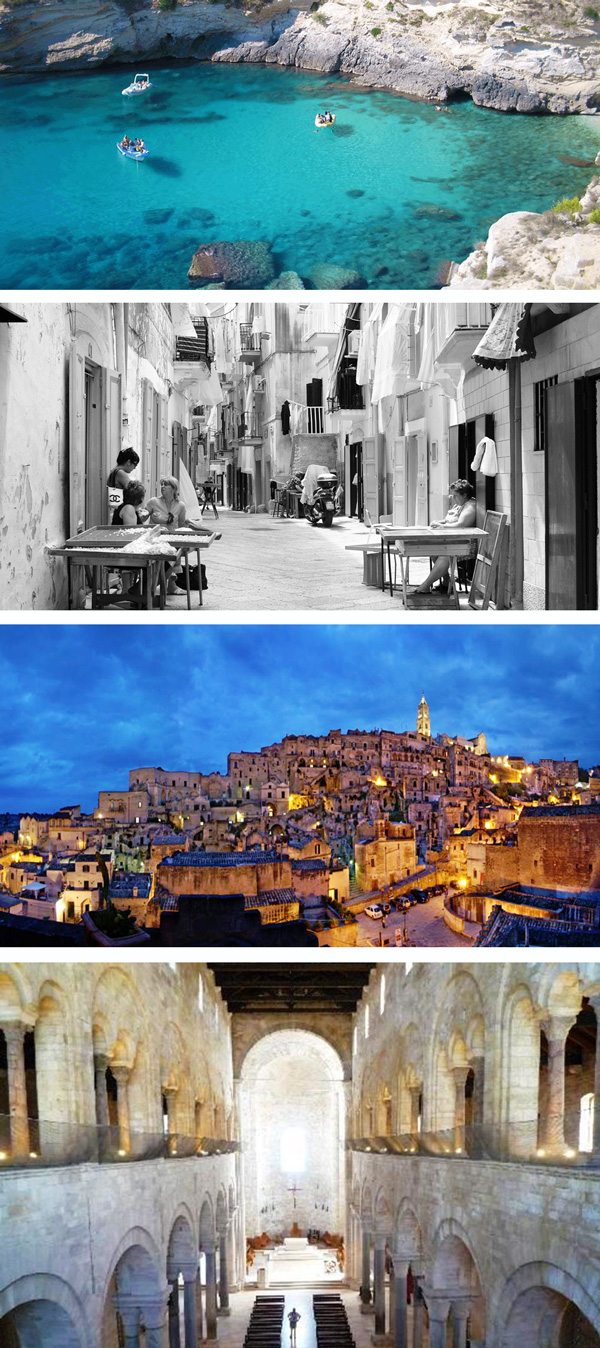
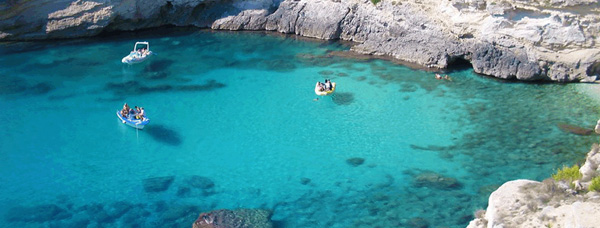
LEUCA & CASTRO MARINA
Santa Maria di Leuca is the sounthernmost point of Puglia and the evocative place
where the Adriatic and Ionian seas meet. It is only 500 miles from northern Africa.
Dominated by a lighthouse with breathtaking views of the sea, it is the end of Italy’s
‘heel’. The town’s most famous site is its hilltop sanctuary, supposedly built on top of
a pagan temple dedicated to Minerva. It also features grand mansions built in the
18th and 19th centuries by wealthy nobles. Castro Marina is also referred to as the
‘Pearl of the Salento’. Built on a rocky promontory it has an old medieval town up
the hill with charming alleys and piazzas with open air cafes, and a marina that
preserves its fishing town traditions. Its coast is filled with caves and coves where
wooden boats of all sizes are harbored in the summer to enjoy the beauty and
peace of its tiny beaches.
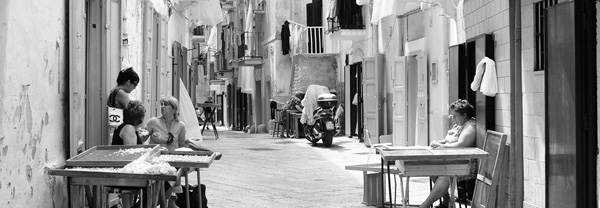
BARI
Bari, the capital of Puglia, is one of the gateways to southern Italy and an important
trading port from ancient times to the present day. Crusaders embarked from here
to the Holy Land and over the centuries Greeks, Romans, Lombards, and Normans
all laid claim to this strategic city, still a bustling port with boats departing to Greece,
Albania, and Croatia. Two cities coexist here. A visitor goes to the Old Quarter to
breathe the atmosphere of the past: to wander winding streets of tightly packed
houses, to view monuments, and shrines, to visit castles built by the Holy Roman
Emperor Frederick. The heart of the Old Town is the bustling Piazza Mercantile, a large
square that was the center of the medieval city. In the new city the visitor strolls
broad orderly gridlike thoroughfares lined with elegant shops or among the street
vendors of Corso Cavour. The two cities vary in lifestyle but offer a view into life in
Puglia, old and new.
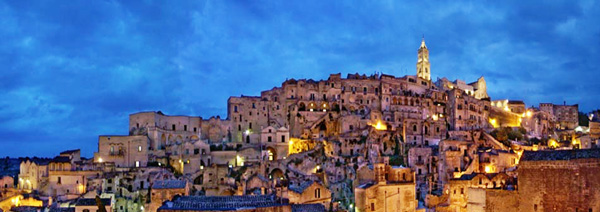
MATERA
is a truly enchanting city that seems too beautiful to be real! It is one of the oldest
continuously inhabited cities in the world since the 10th millennium BC.Its historical
center "Sassi", along with the Park of the Rupestrian Churches, is considered a World
Heritage Site by UNESCO since 1993. The Sassi originated in a prehistoric troglodyte
settlement, and these dwellings are thought to be among the first ever human
settlements in Italy. They are dug into the calcareous rock and many of them are
little more than caverns with intricate juxtapositions and patterns. The ancient town
grew up on a slope of the rocky ravine created by a river that is now a small stream,
Until the late 1980s the Sassi was considered an area of poverty and uninhabitable.
The present local administration, however, has become more tourism-oriented, and
it has promoted the regeneration of the Sassi with the aid of the Italian government.
The town is filled with rupestrian churches and monasteries that are all worth visiting.
Worth visiting are also the impressive cathedral with frescoes of the last judgement,
the churches of San Pietro caveoso and San Pietro Barisano. The streets of Matera are
filled with great cafes and restaurants and there is a vibrant art community that adds
to the beauty of this small city and makes it a one of a kind destination.

ANDRIA, TRANI, BARLETTA & CASTEL DEL MONTE
The coast and the hinterland from Barletta to Bari have one of the most remarkable
concentrations of medieval architecture in Europe—cathedrals and castles built in
a distinctive style known as Apulian Romanesque. Examples include another of
Frederick ll’s vaste castle complexes in Barletta, an important town since Norman
times. The castle was important during the crusades and includes defensive bastions
and newer gardens that commemorate the heroes of both World Wars. The Castel
del Monte, Frederick’s masterpiece, is a highlight of any trip to Puglia because of its
commanding position and grandeur. Declared a UNESCO World Heritage site in 1996,
it skillfully blends architectural styles on a dramatic hilltop site. It uses octagonal
structures from the façade to the interior that are intended to illustrate Frederick’s
great power. Trani is another charming city in this part of Puglia with a rich history
as a port, as a bishop seat after the destruction of Canosa, as well as the largest
Jewish city in Puglia and southern Italy. It was a strategic port of the Mediterranean
in the 11th century, its flourishing era, and it has one of the most beautiful and best preserved examples of Apulian Romanesque cathedrals.
|























